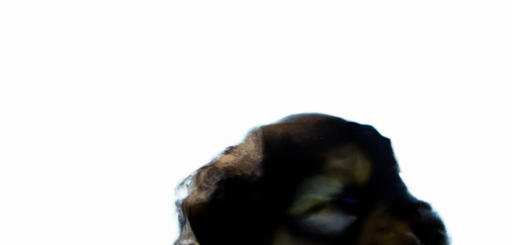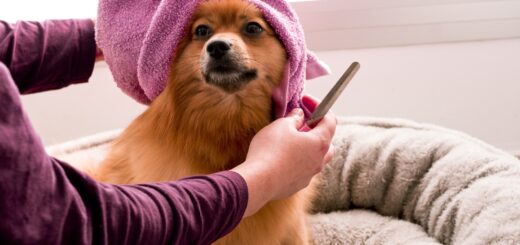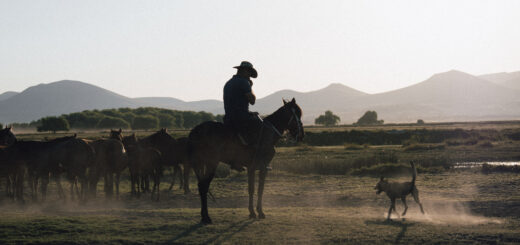Dog Training Tips: How To Teach Your Pup The Basics In 30 Days
Let’s learn how to teach your pup the basics in just 30 days! In this article, we will explore some dog training tips to help you teach your furry friend important skills, such as sitting, staying, and walking on a leash. With a little patience and practice, you’ll have a well-behaved pup in no time! So, get ready to have some fun and let’s start training!

This image is property of images.pexels.com.
Creating a Positive Training Environment
Choosing the Right Training Space
When it comes to training your dog, it is important to choose the right space where you both can focus and be comfortable. Look for an area in your home or yard that is quiet and free from distractions. This will help your pup to stay focused on the training tasks at hand. It’s also important to have enough space for both you and your dog to move around freely during training sessions.
Gathering the Necessary Supplies
Before you start training your dog, make sure you gather all the necessary supplies. You will need treats or small pieces of food to use as rewards, a leash and collar, and possibly a clicker if you choose to use one. It’s important to have these supplies readily available so that you can reward your dog for good behavior immediately.
Establishing a Routine
Dogs thrive on routine, so it’s important to establish a consistent training routine. Decide on a specific time each day that you will dedicate to training your pup. This will help both you and your dog to stay focused and make progress. Consistency is key when it comes to training, so try to stick to your schedule as best as you can.
Setting Clear Training Goals
Before you begin training your dog, it’s important to set clear goals for what you want to achieve. Whether it’s teaching your pup basic commands like sit, stay, and come, or addressing specific behavioral issues like barking or jumping, having clear goals will help you stay focused and track your progress. Break down each goal into small, achievable steps that you can work on with your dog.
Understanding Basic Training Concepts
Using Positive Reinforcement
Positive reinforcement is a training technique that involves rewarding your dog for good behavior. This can be done through treats, praise, or even playtime. When your dog performs the desired behavior, immediately give them a reward to reinforce the positive behavior. This will help your dog understand what is expected of them and encourage them to repeat the behavior in the future.
The Power of Consistency
Consistency is key when it comes to training your dog. Dogs thrive on routine, so it’s important to be consistent in your commands, expectations, and rewards. Use the same verbal cues for each command and make sure everyone in the household is on the same page. Consistency will help your dog understand what is expected of them and make the training process much easier.
Training with Patience and Persistence
Training a dog takes time and patience. It’s important to remain calm and patient throughout the process, as dogs can sense frustration or impatience. Be persistent in your training efforts, and don’t give up if your dog doesn’t catch on right away. Remember that each dog learns at their own pace, so it’s important to be patient and continue working with them.
Reading Canine Body Language
Understanding canine body language is crucial when training your dog. Dogs communicate through their body language, and being able to read and interpret their signals can help you understand how they are feeling and adjust your training approach accordingly. Look for signs of stress, excitement, or discomfort, and respond accordingly to create a positive and safe training environment for your dog.

This image is property of images.pexels.com.
Teaching Essential Commands
Sit
Teaching your dog to sit is one of the most basic commands, and it’s a great place to start when training. To teach your dog to sit, hold a treat above their head and slowly move the treat back towards their tail. As their head follows the treat, their bottom will naturally lower into a sitting position. As soon as their bottom touches the ground, say “sit” and give them the treat as a reward. Repeat this process several times until your dog understands the command.
Stay
The “stay” command is important for keeping your dog in one place until you give them permission to move. To teach your dog to stay, start by having them sit or stand in front of you. Hold your hand up as if you’re telling them to stop, and say “stay” in a firm but calm voice. Take a step back, and if your dog stays in place, reward them with a treat and praise. Gradually increase the distance and duration of the stay command as your dog becomes more comfortable with the concept.
Lie Down
Teaching your dog to lie down is another useful command that can help keep them calm and well-behaved. Start by having your dog sit in front of you. Hold a treat in your hand and slowly lower it to the ground, between their front paws. As your dog follows the treat, their body will naturally lower into a lying position. As soon as their whole body is on the ground, say “lie down” and give them the treat. Repeat this process until your dog understands the command.
Come
The “come” command is important for getting your dog to come to you when called. To teach your dog to come, start in a quiet, enclosed area with few distractions. Say your dog’s name followed by “come” in a happy and excited tone. As your dog starts to come towards you, take a few steps backward to encourage them. When they reach you, reward them with a treat and lots of praise. Repeat this process in different locations and gradually increase the distance.
Leave It
The “leave it” command is crucial for keeping your dog safe and preventing them from picking up or eating things they shouldn’t. Start by holding a treat in your closed fist and showing it to your dog. Say “leave it” in a firm voice. When your dog stops trying to get the treat from your hand and looks away, reward them with a different treat from your other hand. Repeat this process using different objects and gradually increase the difficulty.
Drop It
Teaching your dog to “drop it” is important for preventing them from holding onto items they shouldn’t have. Start by giving your dog a toy or object that they enjoy playing with. Hold a treat near their nose to get their attention, and say “drop it” in a firm but calm voice. As your dog releases the toy, immediately reward them with the treat and praise. Repeat this process with different objects until your dog understands the command.
Crate Training Basics
Choosing the Right Crate
When crate training your dog, it’s important to choose the right crate that is appropriate for their size and breed. Look for a crate that is spacious enough for your dog to stand, turn around, and lie down comfortably. Avoid crates that are too big, as this may encourage your dog to use one corner as a bathroom. It’s also important to consider the material of the crate and make sure it is durable and safe for your dog.
Introducing the Crate
Once you have chosen the right crate for your dog, it’s time to introduce them to it. Place the crate in a quiet area of your home and leave the door open. Encourage your dog to explore the crate by placing treats or their favorite toys inside. Let them go in and out of the crate freely for short periods of time, gradually increasing the duration as they become more comfortable.
Creating Positive Associations
To help your dog view the crate as a positive and safe space, it’s important to create positive associations with it. Feed your dog their meals near the crate, placing the food bowl just inside the door. You can also place their favorite blanket or bed inside the crate to make it more comfortable and inviting. By associating positive experiences with the crate, your dog will be more likely to view it as a safe and secure space.
Gradual Crate Training
Once your dog is comfortable with going in and out of the crate, you can start closing the door for short periods of time. Start by closing the door for just a few seconds, then gradually increase the duration. While your dog is in the crate, provide them with a treat or a chew toy to keep them occupied and distract them from any anxiety or boredom. Gradually increase the amount of time your dog spends in the crate until they are comfortable being in it for longer periods.
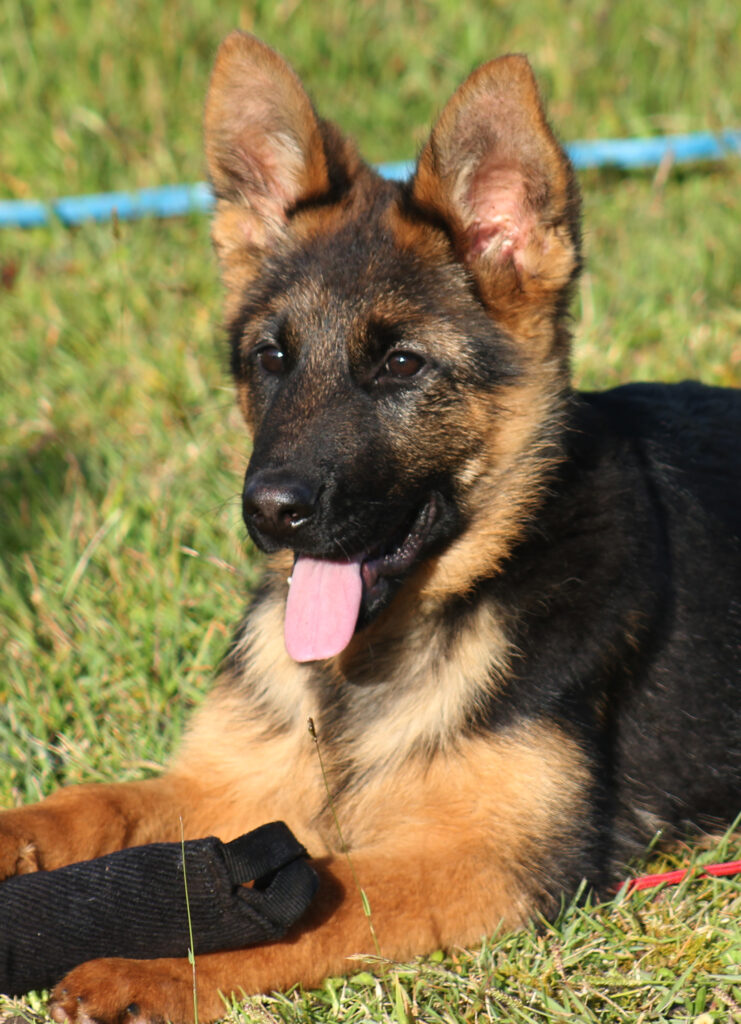
This image is property of images.pexels.com.
Potty Training Techniques
Establishing a Consistent Schedule
Establishing a consistent potty training schedule is essential for teaching your dog where and when to eliminate. Take your dog outside to their designated bathroom area at regular intervals throughout the day, such as first thing in the morning, after meals, and before bedtime. By following a consistent schedule, you can help your dog develop a routine and reduce the likelihood of accidents indoors.
Positive Reinforcement for Outdoor Elimination
When your dog goes potty outside, make sure to provide lots of praise and rewards. This positive reinforcement will help your dog make the connection between going potty outside and receiving praise and rewards. Carry treats with you when you take your dog outside, and as soon as they finish eliminating, reward them with a treat and lots of enthusiastic praise.
Dealing with Accidents
Accidents are bound to happen during the potty training process, especially in the early stages. If you catch your dog in the act of eliminating indoors, calmly interrupt them by saying “no” and immediately take them outside to their designated bathroom area. Do not punish or scold your dog for accidents, as this can create fear and anxiety around eliminating. Instead, clean up any messes thoroughly to remove any lingering scent, as this can attract your dog back to the same spot.
Using Crate Training as a Potty Training Aid
Crate training can be a valuable tool in potty training your dog. By confining your dog to a crate when you cannot directly supervise them, you can prevent accidents from occurring indoors. Dogs generally do not like to eliminate in their sleeping area, so by utilizing the crate during potty training, you can help your dog develop bladder and bowel control. Make sure to take your dog outside to their designated bathroom area immediately after letting them out of the crate.
Managing Leash Walking
Selecting the Right Leash and Collar
When it comes to leash walking, it’s important to choose the right leash and collar for your dog. A standard leash and collar are suitable for most dogs, but some dogs may benefit from a harness or a head halter. Consider your dog’s size, breed, and any specific behavioral issues when selecting the appropriate equipment. It’s always a good idea to consult with a professional trainer or veterinarian for guidance.
Teaching Loose Leash Walking
Teaching your dog to walk on a loose leash is essential for enjoyable walks. Start by holding the leash with a relaxed grip and keep it short enough to maintain control, but not tight or tense. Encourage your dog to walk beside you by using treats or verbal praise. If your dog starts to pull or tug, stop walking and wait for them to relax the tension on the leash before continuing. Repeat this process consistently, rewarding your dog for walking at your side.
Addressing Pulling and Lunging Behaviors
If your dog has a tendency to pull or lunge on the leash, it’s important to address these behaviors. One effective technique is to change direction whenever your dog starts to pull. This teaches your dog that pulling will not get them where they want to go. Another technique is to teach your dog the “heel” command, which encourages them to walk calmly and closely by your side. Seek guidance from a professional trainer if you need assistance with addressing pulling and lunging behaviors.
Working on Heel Command
The “heel” command is a more advanced leash walking command that teaches your dog to walk calmly and closely by your side. Start by holding a treat in your hand at your dog’s nose level. Take a step forward, keeping your dog close to your side. Say “heel” in a calm but firm voice as you take each step. Reward your dog with a treat and praise for staying at your side. Gradually increase the duration and distance of the “heel” command as your dog becomes more comfortable with it.
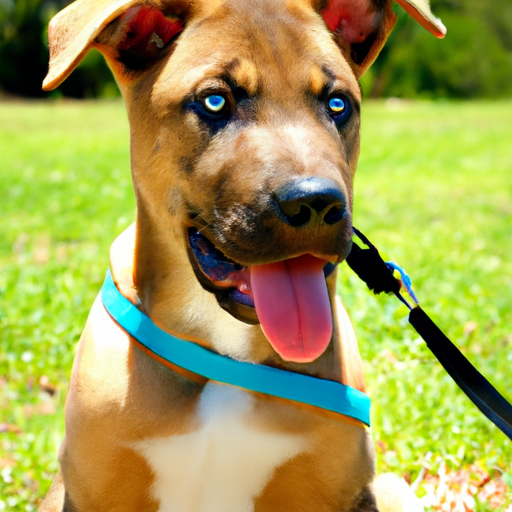
Socialization and Obedience Training
Introducing Your Puppy to New People and Environments
Socialization is crucial for helping your puppy develop good behavior and become well-rounded. Introduce your puppy to new people, places, and environments in a positive and controlled manner. Invite friends and family over to interact with your puppy, and take them on outings to different locations to expose them to various sights, sounds, and smells. Make sure to provide lots of treats, praise, and rewards during these experiences to build positive associations.
Teaching Basic Manners in Different Situations
Basic obedience commands such as sit, stay, and come are important for ensuring that your dog is well-behaved in different situations. Practice these commands in different environments and with increasing distractions. For example, start by practicing in a quiet room at home, then progress to practicing in your backyard or at a local park. Gradually increase the level of difficulty as your dog becomes more proficient at following the commands.
Exposing Your Dog to Other Dogs and Animals
Exposing your dog to other dogs and animals is important for their social development. Organize playdates with other friendly dogs or enroll your dog in a supervised group obedience class. When introducing your dog to new animals, ensure that the interactions are supervised and controlled. Gradually increase the duration and proximity of these interactions as your dog demonstrates good behavior and social skills.
Advanced Obedience Commands
Once your dog has mastered the basic obedience commands, you can move on to teaching them more advanced commands. Some examples of advanced obedience commands include “leave it,” “drop it,” “wait,” and “go to your bed.” Advanced obedience commands can be useful in various situations and can help you maintain control and ensure your dog’s safety. Break down each command into small, achievable steps and reward your dog for their progress.
Addressing Problematic Behaviors
Barking
Excessive barking can be a problematic behavior that needs to be addressed. Determine the cause of the barking, whether it’s boredom, fear, or alerting to something. Once you understand the underlying cause, you can address it appropriately. For example, if your dog is bored, provide them with mental and physical stimulation through interactive toys and playtime. If your dog is fearful, work on desensitization and counter-conditioning techniques with the help of a professional trainer.
Digging
Digging is a natural behavior for dogs, but it can become problematic if they are digging in inappropriate areas. Provide your dog with a designated digging area, such as a sandbox or a specific part of the yard. Encourage your dog to dig in this designated area by burying toys or treats in the soil. If your dog starts digging in an inappropriate area, redirect them to the designated area and reward them for digging there.
Chewing
Chewing is a normal behavior for dogs, especially puppies who are teething. However, it’s important to redirect this behavior to appropriate chew toys and prevent your dog from chewing on furniture or other household items. Provide your dog with a variety of chew toys and rotate them to keep them interesting. When you catch your dog chewing on an inappropriate item, redirect them to a chew toy and reward them for chewing on it instead.
Jumping
Jumping up on people is a common behavior problem in dogs. Teach your dog an alternative behavior, such as sitting or offering a paw, when they greet people. Practice this behavior with friends and family members by asking them to only give attention or pet your dog when they are calm and have all four paws on the ground. Consistency is important, as everyone in the household and visitors should adhere to the same rules.
Separation Anxiety
Separation anxiety is a common issue in dogs and can manifest in behaviors such as excessive barking, destructive chewing, and house soiling. Gradual desensitization and counter-conditioning techniques can help your dog feel more comfortable being alone. Start by leaving your dog alone for short periods of time and gradually increase the duration. Provide them with mental stimulation through puzzle toys or treat dispensers to keep them occupied while you’re away. Seek professional help if your dog’s separation anxiety is severe.
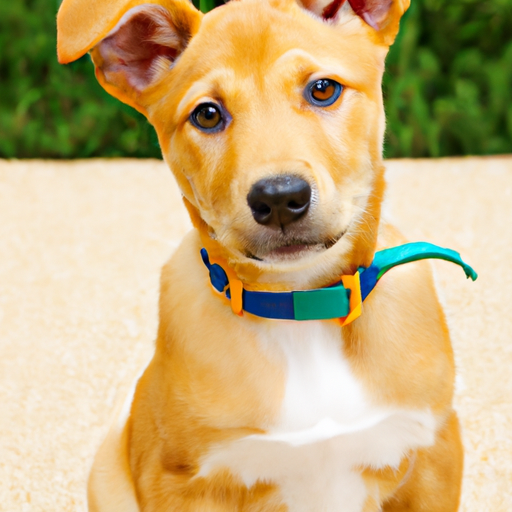
Training for Mental Stimulation
Introducing Puzzle Toys and Treat Dispensers
Puzzle toys and treat dispensers are excellent tools for providing mental stimulation to your dog. These toys require your dog to think and problem-solve in order to receive a reward. Start with easy puzzles and gradually increase the difficulty as your dog becomes more proficient. Rotate your dog’s toys regularly to keep them engaged and challenged.
Teaching Tricks and Games
Teaching your dog tricks and games is a fun and interactive way to provide mental stimulation. Tricks such as “shake hands,” “roll over,” and “play dead” can be taught using positive reinforcement techniques. Engage in interactive games such as hide-and-seek, where you hide treats or toys and encourage your dog to search for them. These activities not only provide mental stimulation but also strengthen the bond between you and your dog.
Engaging in Interactive Play
Interactive play is important for providing both mental and physical stimulation to your dog. Play fetch, tug-of-war, or hide-and-seek with your dog to keep them entertained and engaged. Use toys that encourage problem-solving, such as treat-dispensing toys or puzzle balls. These activities not only keep your dog mentally stimulated but also help burn off excess energy.
Training for Scent Work
Scent work is a fun and challenging activity that taps into your dog’s sense of smell. Start by hiding treats or toys around the house or in the yard and encourage your dog to find them using their nose. As your dog becomes more proficient, you can introduce more complex scent work activities, such as searching for specific scents or participating in scent detection competitions. Scent work not only provides mental stimulation but also helps build your dog’s confidence and focus.
Maintaining a Lifelong Training Routine
Continuing Practice and Reinforcement
Once your dog has learned basic commands and behaviors, it’s important to continue practicing and reinforcing their training throughout their life. Make training a part of your daily routine, even if it’s just a few minutes each day. Consistency is key, so continue to use positive reinforcement techniques and reward your dog for good behavior.
Adding Challenges and Variations
As your dog becomes more proficient in their training, it’s important to add challenges and variations to keep them engaged and stimulated. Increase the difficulty of commands by introducing distractions or practicing in new environments. Teach your dog new tricks or behaviors to expand their training repertoire. By consistently adding challenges and variations to their training, you can keep your dog mentally sharp and prevent boredom.
Seeking Professional Training Support
If you’re struggling with a specific training issue or if you want to take your dog’s training to the next level, it’s beneficial to seek professional training support. A professional dog trainer can provide guidance and expertise to help address specific behavioral issues or teach advanced obedience commands. They can also provide a fresh perspective and offer personalized training techniques tailored to your dog’s needs.
Training for New Skills and Behaviors
Training is a lifelong process, and there are always new skills and behaviors that you can teach your dog. Whether it’s teaching them a new trick, participating in a specific dog sport, or addressing a specific behavior issue, continue to set new training goals for your dog. By consistently working on new skills and behaviors, you can keep your dog’s training routine exciting and rewarding for both of you.


